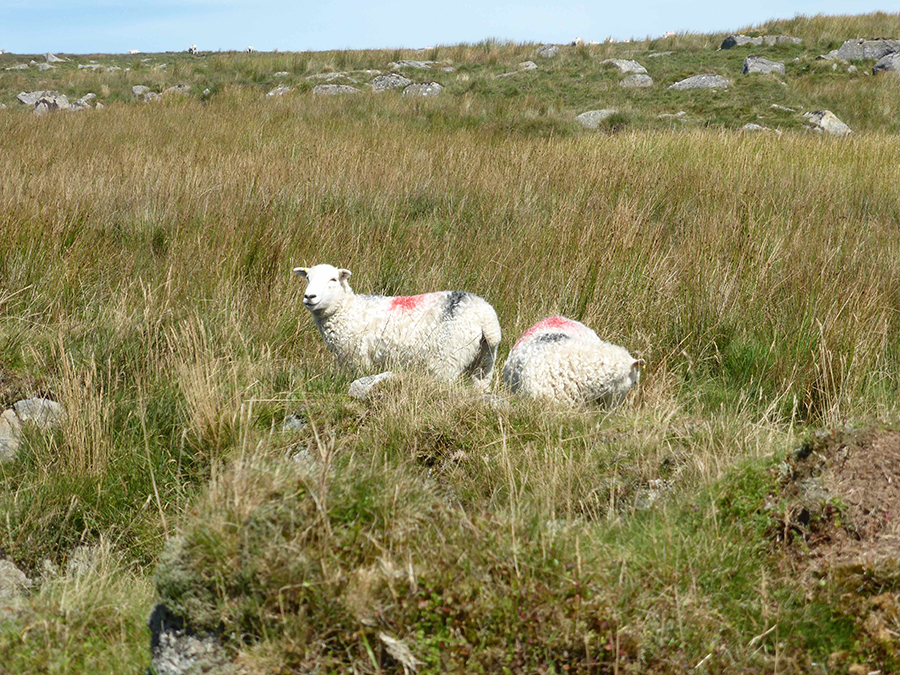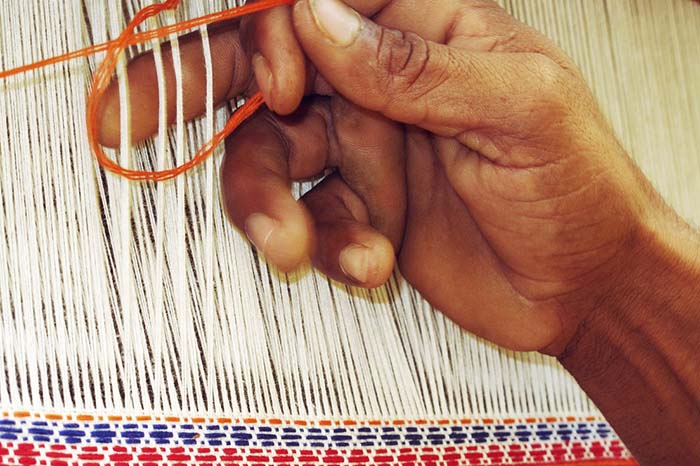Weaving Futures: Week 7 | Studio Houndstooth
 Weaving Futures is an exhibition at London Transport Museum highlighting the importance of woven textile design to the London Transport system. The exhibition  explores the process and making of digital woven textiles, as part of the Museums’, Designology season.
Weaving Futures is an exhibition at London Transport Museum highlighting the importance of woven textile design to the London Transport system. The exhibition  explores the process and making of digital woven textiles, as part of the Museums’, Designology season.
Each week, visitors will be able to see invited designers/artists in residence in the Designology studio, who will be working on a project brief and interacting with a weaver in their residency dates. The weavers will be interpreting the residents work live into digital woven textile prototypes and final works on a state-of-the-art TC2 digital jacquard loom.Â
 Week 7 features: Studio Houndstooth
Residency dates: 3rd & 4th Jan 2017
Activity days: 3rd & 4th Jan 2017. Loom running 4th Jan 2017
Studio Houndstooth is a collaboration between Jo Pierce and Philippa Brock. They investigate, interrogate and instigate innovative textile\material design processes and making methods leading to final design/future digital and analogue craft artefacts including using ludic methodologies.
The Studio work on their own research projects and  commissions from both private and public bodies. They research, design and make to commission, run workshops for makers, non makers and community groups, and develop innovative visual research, material sources and objects. Projects  include a temporary A12 patternwall, an architecture pattern wrap concept, Barcelona, domestic wallpaper archive and data base (ongoing). Exhibitions 2016: Real Dirty Blue and Textile Month New York

The Houndstooth Project is a serious play, ludic, egalitarian project run by Studio Houndstooth. The project uses the ubiquitous, well-recognised, houndstooth textile motif for serious play making and dialogue. The Houndstooth Project can be self led through their website or within workshops.
Weaving Futures: Week 7 | Josephine Ortega
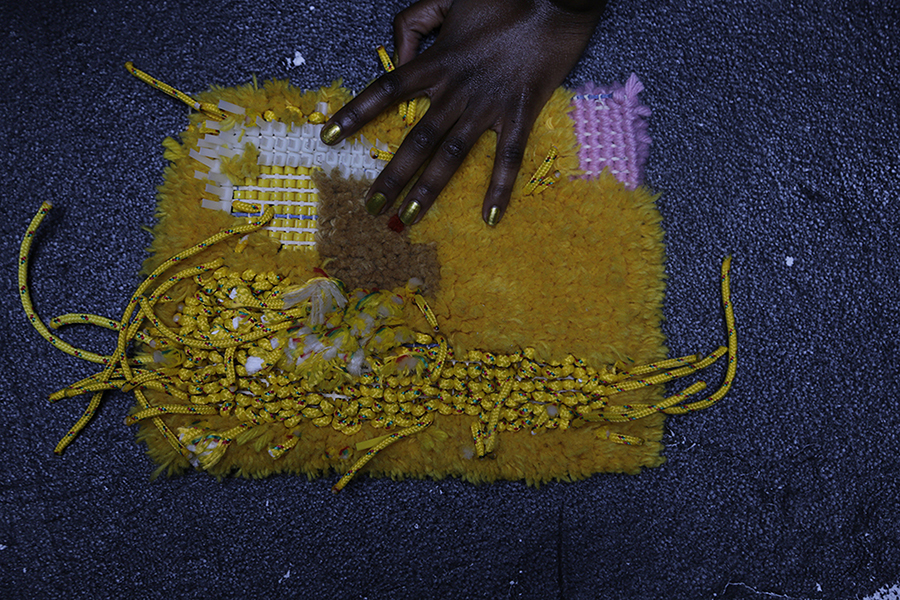 Weaving Futures is an exhibition at London Transport Museum highlighting the importance of woven textile design to the London Transport system. The exhibition explores the process and making of digital woven textiles, as part of the Museums’, Designology season.
Weaving Futures is an exhibition at London Transport Museum highlighting the importance of woven textile design to the London Transport system. The exhibition explores the process and making of digital woven textiles, as part of the Museums’, Designology season.
Each week, visitors will be able to see invited designers/artists in residence in the Designology studio, who will be working on a project brief and interacting with a weaver in their residency dates. The weavers will be interpreting the residents work live into digital woven textile prototypes and final works on a state-of-the-art TC2 digital jacquard loom.Â
Week  7  features:  Josephine Ortega
Residency dates: 5th – 7th Jan 2017
Activity Days: 6th & 7th Jan 2017
Born in Nottingham, UK, Josephine Ortega is a Textile Designer who recently graduated  from Central Saint Martins. During her degree she specialised in Woven Textiles, exploring construction of yarn through the loom. Throughout her final year, Ortega began to explore alternative methods of construction, which meant her designs developed off loom and she began to explore a traditional tug-making technique that became the basis for her final major project.
Her recent  collection, ‘Grid’ investigated the perception of ‘comfort’, culminating in textile proposals for transport seating.
In order to define the abstract notion of ‘comfort’, Ortega
 collected people’s testaments on where and when they feel at their most comfortable.
Compiling responses and accompanying photography of the individuals’ homes, the designer created a visualisation of comfort, ultimately offering her a palette of colour, pattern and yarn choice with which to work.
Wanting to challenge the boundaries of weight, density and scale throughout transport fabrics, Ortega explored construction methods, material investigation and dyeing processes throughout her work, resulting in bespoke, hand crafted designs.
Ethnographic Research Project: The Woven Kind
The Woven Kind is a new ethnographic and global Artisan Textile project, working to document, promote and preserve global traditional weaving techniques.
Designed to establish international relationships with global artisan textile communities and their NGO partners, the work will help encourage widened appreciation of each country’s cultural heritage in textiles, stimulating an interest of woven textiles in a global context.
Juliet Graziano and Caroline Donaldson of illae woven studio  are developing this project to enhance their understanding of an ancient craft, which remains fundamental to the economic sustainability of the local artisans and their communities.
With their initial trip to India in January 2017, Juliet and Caroline hope to continue this project globally, researching and visiting different countries with a rich heritage in hand-weaving, to build an extensive and exciting body of research for public dissemination.
The research will inform a series of outcomes.
- Online database of research
- A series of lectures and article
- An informative film
- An exhibition
- A self published book
- Textiles archive
Each outcome will be accessible to all weavers and artists in the UK to engage with India
The initial trip will see Juliet and Caroline visit the Western Rajasthani village of Pokhran with their partner NGO Rangsutra .
Their research will focus on several stages of weaving, from initial design idea to loom set up and their use of tools.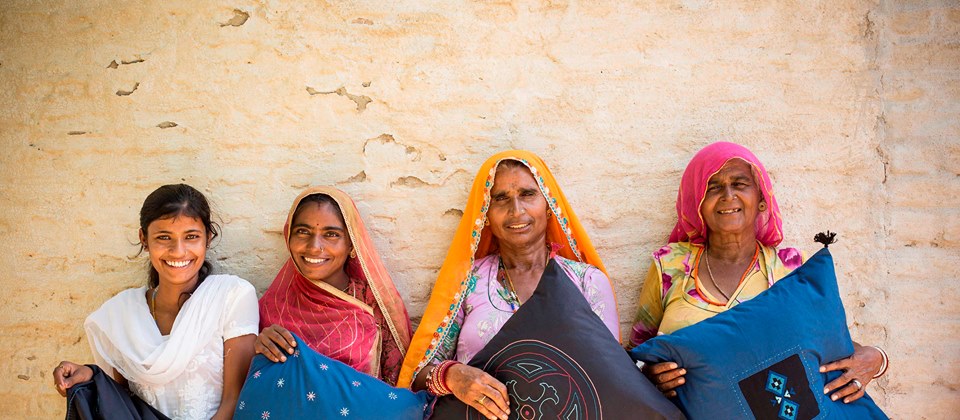
Late Debate: Designing the Tube | London Transport Museum
 Late Debate: Designing the Tube
Late Debate: Designing the Tube
Date: Thursday 26 January 2017
Time: 18.45 – 22.30
Weaving Futures residents will be taking part in a PechaKucha* events during the late debate and there will also be a workshop running in the Designology Studio  with live TC2 jacquard loom weaving.
Interactive talks and debates:
- Tales from Weaving Futures: Fast paced designology studio presentations
- Off the Rails: Learning from the past and influencing the future
- Connect or forget: Explore how changes to the network shape communities
- Delight and surprise: Art, ads, culture? What makes your journey matter?
 Serious play activities:
- Bar and live music
- Network mapping on a big scale
- Secrets behind the Tube map
- Illustrate an idiom: exploring station design
- Digital weaving
- Meet the authors and designers
Late Debate on the evening of 26 January 2017. Guests will be able to enjoy interactive debates, talks and workshops, as well as a bar, live music and the Museum’s special Designology exhibition.
DEBATES AND TALKS
Guests will have the chance to join one of four keynote talks and debates by leading industry experts, designers and authors.
- Tales from Weaving Futures: Powered by PechaKucha*: Enjoy a PechaKucha of textile tales, design debates and weaving wonders. All brought to you by the designers, artists and industry professionals involved the Designology Weaving Futures Exhibition studio programme.
- Off the Rails: Learning from the past and influencing the future: In this panel discussion, expert historians, authors and contemporary designers will explore designing for the railways, sharing learning from past and debating recommendations for the future.
- Connect or forget: Powered by New London Architecture: Work with New London Architecture and a panel of expert speakers to consider how the Tube, and wider transport network, has the ability to connect or forget regions and communities.
- Delight and surprise: Explore how our journeys can be impacted through moments of delight and surprise, and how such moments make us a world class leader in design. Give your views on how important it is for our stations to celebrate heritage, promote a sense of nature, engage with art and culture, and make an impact through well curated advertising.
 Hosts and speakers in alphabetical order include: David Lawrence, Kingston University professor and author; Declan McCafferty, Partner at Grimshaw Architects; Dominique Caplan, Gainsborough Weaving; Geoff Marshall, Londonist Video Journalist; Glenn Iceton, Group Agency Sales Director, Exterion Media; Jessica Vaughan, Curator of Art on the Underground; Larissa Kunstel-Tabet and Renee Verhoeven, Takram; Linda Florence, printed textile designer and senior lecturer Central Saint Martins; Mike Ashworth, Design & Heritage Manager at London Underground; Mike Walton, London Transport Museum; Nick Tyler, University College London professor and author; Paul Priestman Designer, Chairman of PriestmanGoode; Peter Murray, Chairman of New London Architecture; Philippa Brock, Weaveshed; Sam Richards, Head of Urban Integration at Crossrail; Samuel Dempsey, Product & Critical Designer; Wallace Henning, Designer at Koto and reproducer of the British Rail Corporate Identity Manual; Will Sandy, Edible Bus stop. All other speakers and contributors to be announced in January 2017. Continue reading →
Weaving Futures: Week 5 | Linda Florence
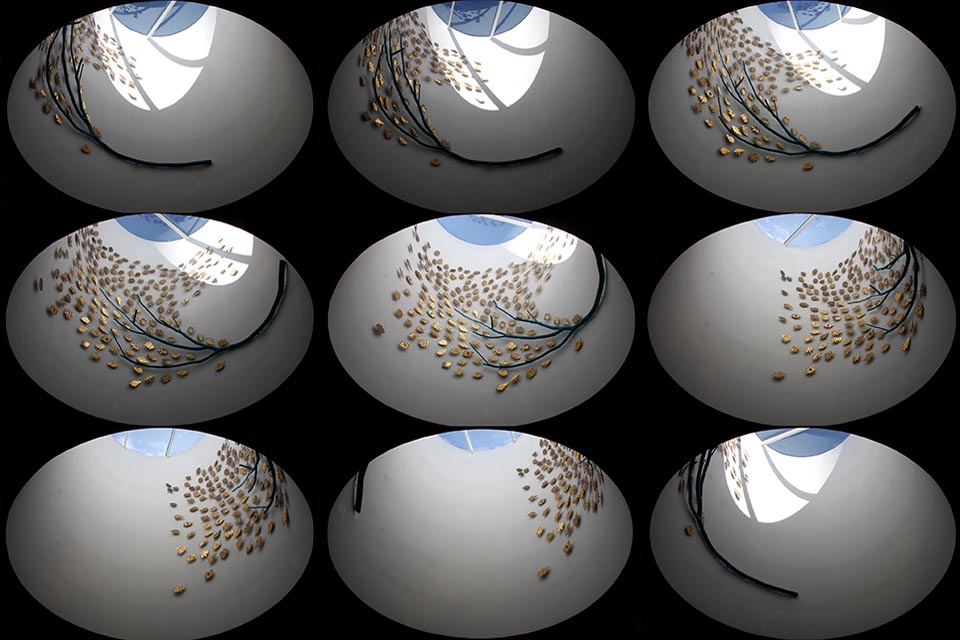 Weaving Futures is an exhibition at London Transport Museum highlighting the importance of woven textile design to the London Transport system. The exhibition explores the process and making of digital woven textiles, as part of the Museums’, Designology season.
Weaving Futures is an exhibition at London Transport Museum highlighting the importance of woven textile design to the London Transport system. The exhibition explores the process and making of digital woven textiles, as part of the Museums’, Designology season.
Each week, visitors will be able to see invited designers/artists in residence in the Designology studio, who will be working on a project brief and interacting with a weaver in their residency dates. The weavers will be interpreting the residents work live into digital woven textile prototypes and final works on a state-of-the-art TC2 digital jacquard loom.Â
 Week  5 features: Linda Florence
Residency dates: 19th – 22nd  Dec 2016
Activity days: 20th & 22nd Dec 2016
Linda Florence produces bespoke hand printed wallpaper and installation artwork for public, commercial and private interiors. Florence’s printing techniques incorporate a mixture of traditional and new technologies including silk screen-printing, ceramic printing and laser cutting.
Florence draws inspiration from the materials, craft practice and historic and social context of the project site and builds a narrative for each project.
Her clients include the Victoria and Albert Museum, The Jerwood Space, Swarovski, The National
Trust, Ted Baker, Sheffield Millennium Gallery, NHS Hospitals and Random House Books.

Continue reading →
Weaving Futures: Week 4 | Gainsborough
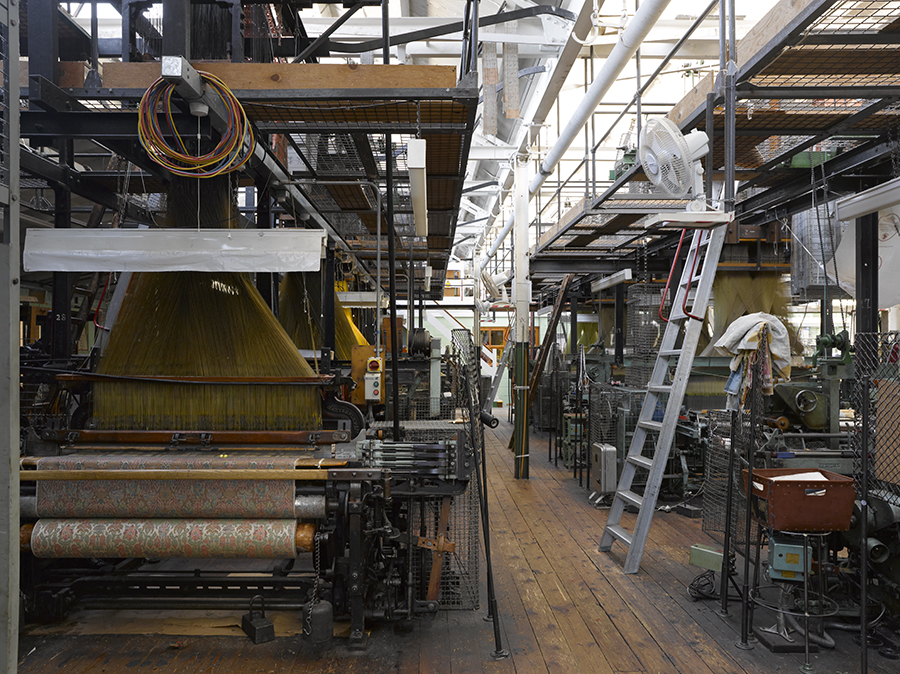 Weaving Futures is an exhibition at London Transport Museum highlighting the importance of woven textile design to the London Transport system. The exhibition explores the process and making of digital woven textiles, as part of the Museums’, Designology season.
Weaving Futures is an exhibition at London Transport Museum highlighting the importance of woven textile design to the London Transport system. The exhibition explores the process and making of digital woven textiles, as part of the Museums’, Designology season.
Each week, visitors will be able to see invited designers/artists in residence in the Designology studio, who will be working on a project brief and interacting with a weaver in their residency dates. The weavers will be interpreting the residents work live into digital woven textile prototypes and final works on a state-of-the-art TC2 digital jacquard loom.Â
 Week  4 features: Gainsborough
Gainsborough is a Jacquard weaving mill and dye house based in Suffolk, producing the highest quality of cloth from both modern and traditional punch card looms. Established in 1903 by an enterprising weaver, Reginald Warner, the business moved to its present location in 1924.Offering a truly bespoke design service, Gainsborough runs an in-house operation from design and dying through to weaving. With a wonderful archive of over 7,000 designs built up through Warner’s Grand Tours and successive generations of weaving, Gainsborough is by nature a very special and unfortunately rare example of British craftsmanship and artisanal manufacture.
Awarded the Royal Warrant in 1981, the company has produced fabrics for royal palaces, state buildings and grand residences the world over, and the tradition of creating fabrics of enduring quality carries on today. Gainsborough’s reputation was built on innovation and design, and you are as likely to find our products in a luxury vehicle or on a Parisian catwalk as on the walls of a stately home. Their designs span the full breadth of creative expression, from the very traditional to the thoroughly avant-garde.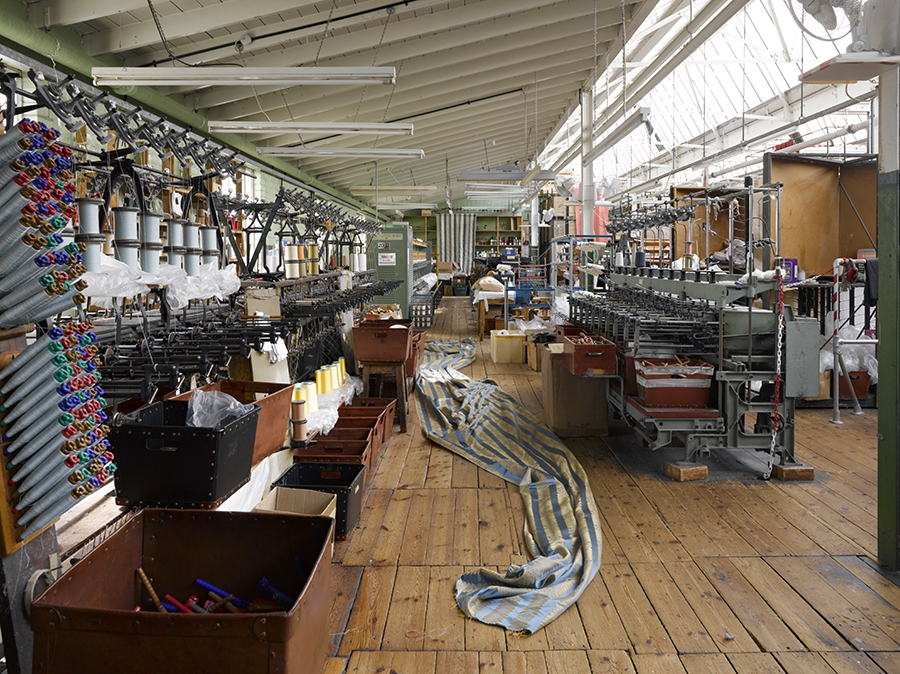 Continue reading →
Continue reading →
Weaving Futures: Week 3 | Camira
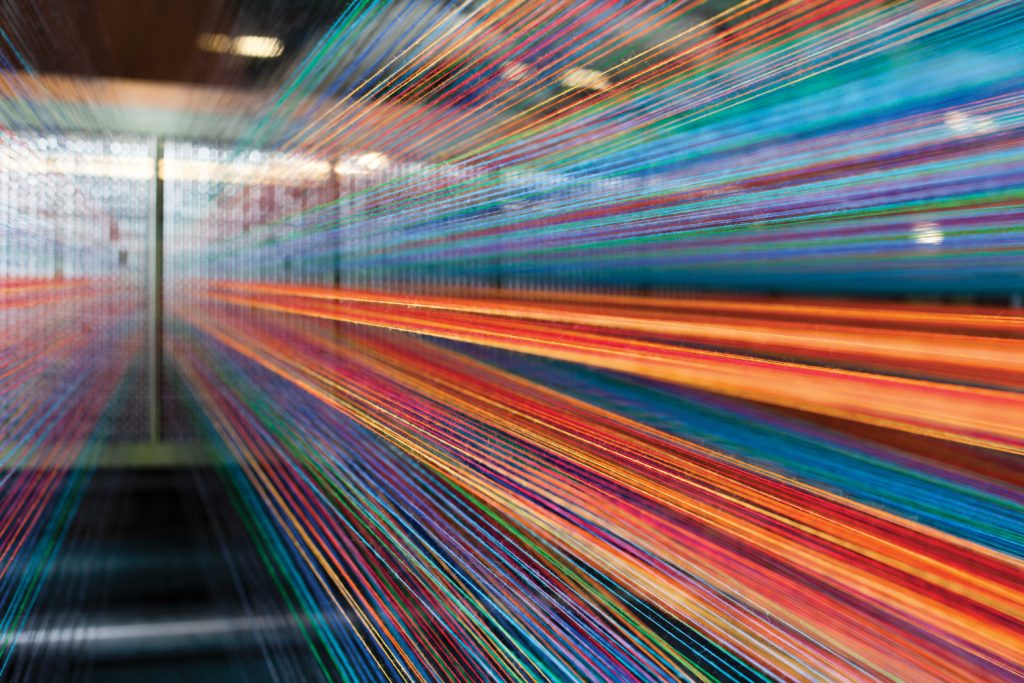 Weaving Futures is an exhibition at London Transport Museum highlighting the importance of woven textile design to the London Transport system. The exhibition explores the process and making of digital woven textiles, as part of the Museums’, Designology season.
Weaving Futures is an exhibition at London Transport Museum highlighting the importance of woven textile design to the London Transport system. The exhibition explores the process and making of digital woven textiles, as part of the Museums’, Designology season.
Each week, visitors will be able to see invited designers/artists in residence in the Designology studio, who will be working on a project brief and interacting with a weaver in their residency dates. The weavers will be interpreting the residents work live into digital woven textile prototypes and final works on a state-of-the-art TC2 digital jacquard loom.Â
Week 3 features:Â Camira
Residency dates: 9th &Â 10th Dec 2016. 18th Jan & 7th Feb 2017
Activity days: 9th & 10th Dec 2016, 7th Feb 2017
Camira is an independent UK based company which designs and manufactures contract performance fabrics for transport and commercial interiors. They are the major sponsors of  the Weaving Futures exhibition
The company was founded in 1974 as Camborne Fabrics in Huddersfield, which spent 9 years as part of the US Interface organisation before completing a successful management buy-out 10 years ago. They got involved in transport fabrics through a couple of acquisitions, firstly British Furtex Fabrics in 2003, then John Holdsworth & Co in 2007. The relations between the Holdsworth brand and TfL go back decades, as Holdsworth was originally founded in 1822 and got involved in moquette rail fabrics at a very early stage.
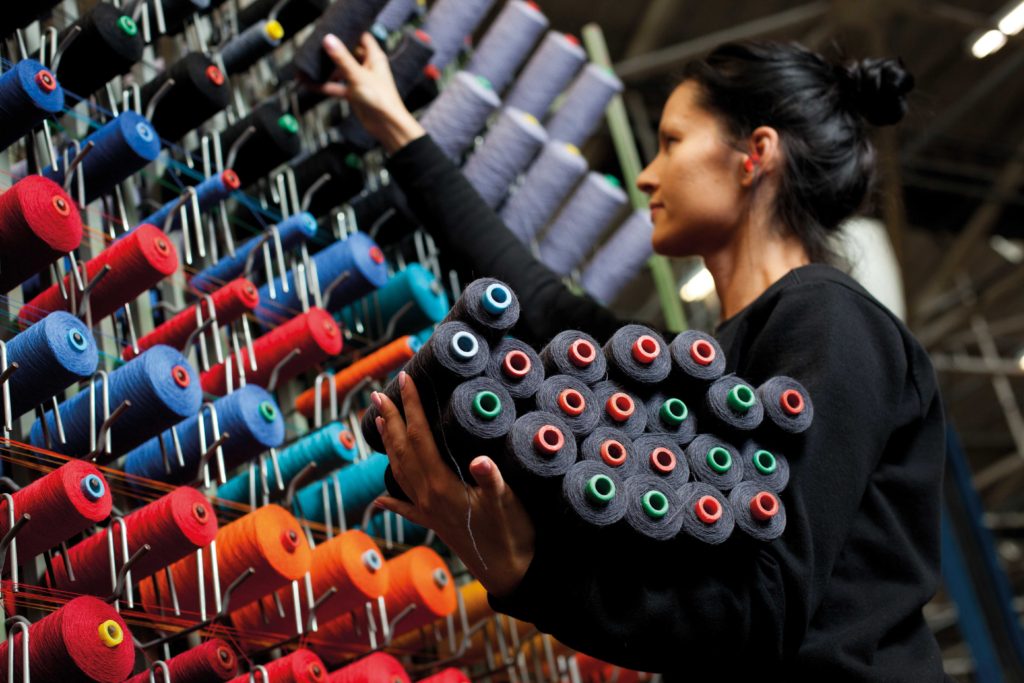 Camira is described as a young company with a very rich heritage. They have over 500,000 sq. feet of UK manufacturing, 75,000 sq. feet in Lithuania, and control the bulk of their supply chain and manufacturing processes, from yarn dyeing, through warping, weaving and textile finishing.
Camira is described as a young company with a very rich heritage. They have over 500,000 sq. feet of UK manufacturing, 75,000 sq. feet in Lithuania, and control the bulk of their supply chain and manufacturing processes, from yarn dyeing, through warping, weaving and textile finishing.
They have in-house design, colour and technical specialists, who can exploit their diverse weaving capabilities to create different fabric constructions and design styles.
Camira make 8 million metres of fabric a year, including a million metres for transport applications, and sell to 70 countries around the world. They hold the Queen’s Awards for International Trade and Sustainable Development.
Other residents participating in the Weaving Futures season include: Assemble, Beatwoven, Philippa Brock, Camira, Central Saint Martins, BA Textile students, Samuel Dempsey, Linda Florence, Gainsborough Weaving Company, Eleanor Pritchard, Rare Thread : aka Kirsty McDougall & Laura Miles, Josephine Ortega, Ismini Samanidou, Studio Houndstooth: Jo Pierce, Takram & Priti Veja
Resident artists and designers have been invited to respond to a project brief; exploring the role of textiles in modern transport now and in the future. They will focus on ‘untapped’ sources of data generated by, or helpful to, the transport system. Their responses will then be interpreted into woven textiles, live for museum visitors.
Creative responses may span from future speculations on data capture and its textile use, to new methods of digitising human interactions, to creative interpretations and visualisations of existing TfL data sets.
The weavers for the season are Rosie Green & Hanna Vinlöf Nylen
Text and images : With thanks to Camira
Weaving Futures: Week 3 | Assemble
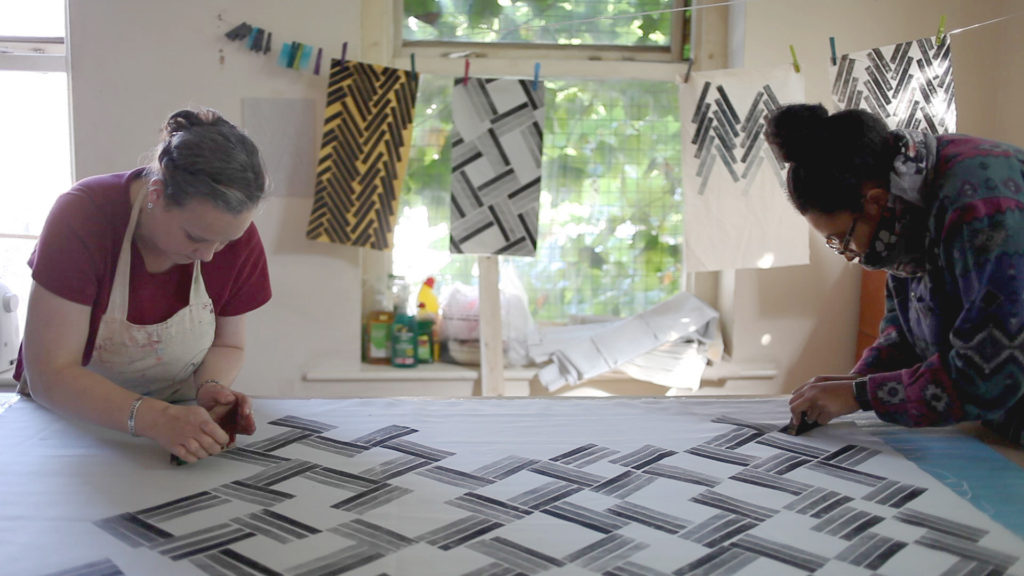 Weaving Futures is an exhibition at London Transport Museum highlighting the importance of woven textile design to the London Transport system. The exhibition explores the process and making of digital woven textiles, as part of the Museums’, Designology season.
Weaving Futures is an exhibition at London Transport Museum highlighting the importance of woven textile design to the London Transport system. The exhibition explores the process and making of digital woven textiles, as part of the Museums’, Designology season.
Each week, visitors will be able to see invited designers/artists in residence in the Designology studio, who will be working on a project brief and interacting with a weaver in their residency dates. The weavers will be interpreting the residents work live into digital woven textile prototypes and final works on a state-of-the-art TC2 digital jacquard loom.Â
Week 3 features: Assemble
Residency dates: 4th – 8th Dec 2016
Activity days: 6th & 8th Dec 2016
Assemble are a collective based in London who work across the fields of art, architecture and design. They began working together in 2010 and are comprised of 20 members. Assemble champion a working practice that is interdependent and collaborative, seeking to actively involve the public as both participant and collaborator in the on-going realisation of the work.
In 2015 Assemble won The Turner Prize for their project Granby Workshop that makes experimental, handmade products for homes. It was set up as part of the community-led rebuilding of a Liverpool neighbourhood, following years of dereliction and institutional neglect.
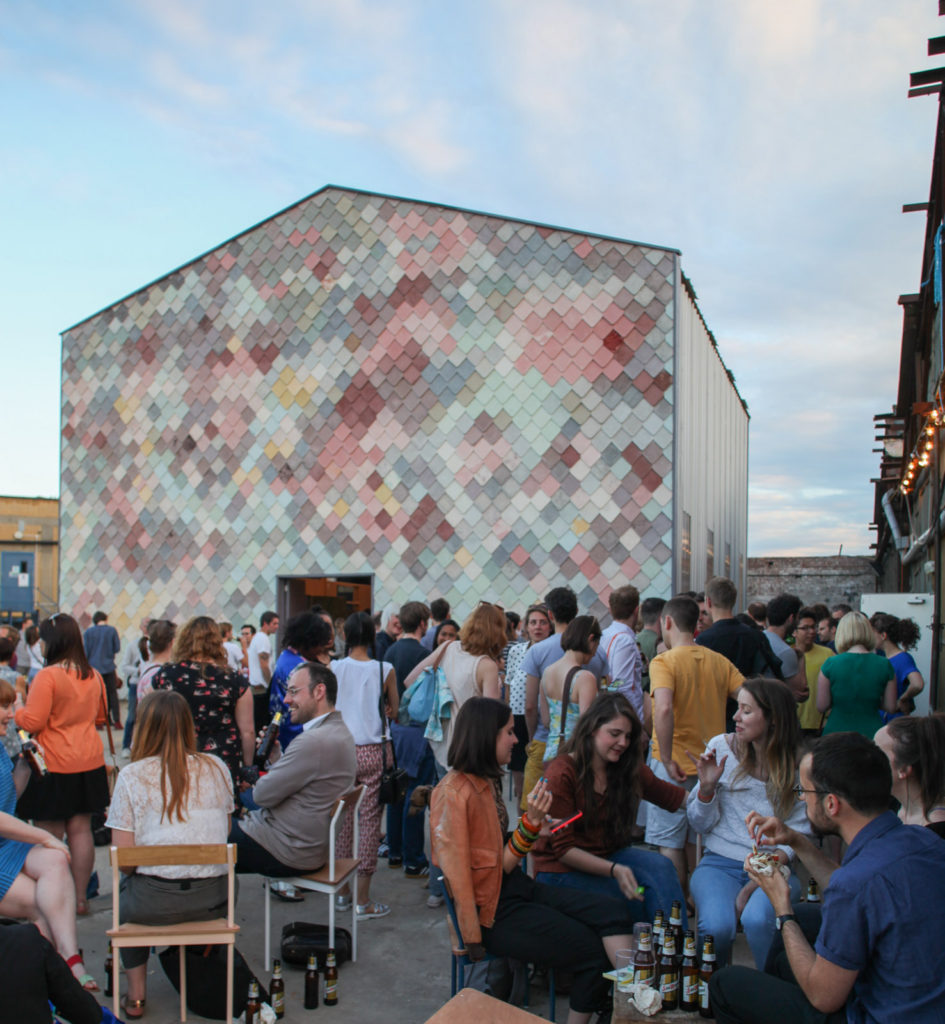 Maria Lisogorskaya, Jane Hall and Paloma Strelitz from Assemble will be the residents in Weaving Futures. Continue reading →
Maria Lisogorskaya, Jane Hall and Paloma Strelitz from Assemble will be the residents in Weaving Futures. Continue reading →
Job: Parry Murray
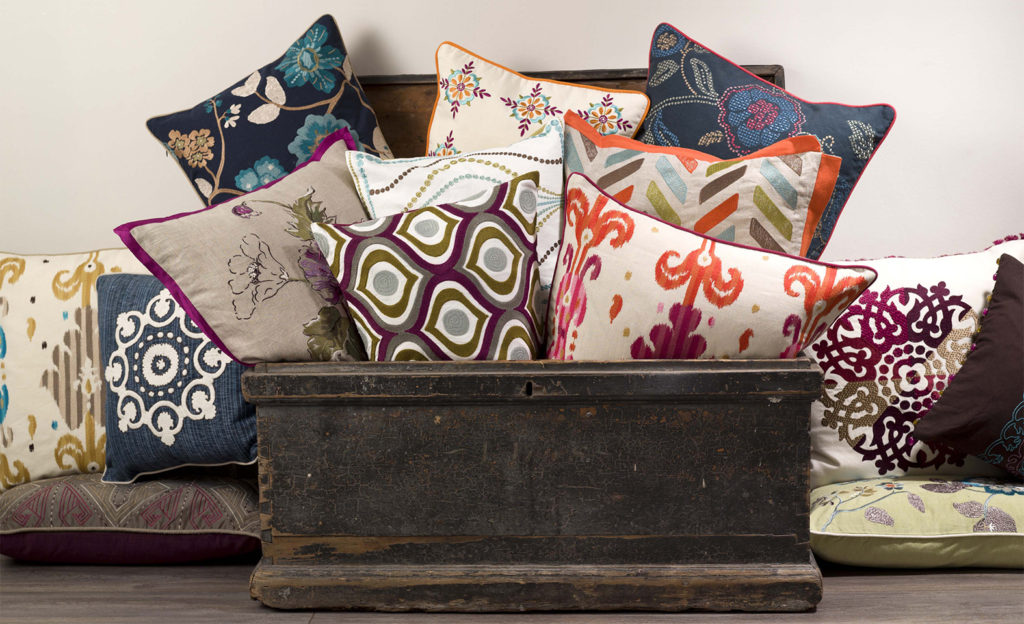 Parry Murray  have an exciting new opportunity for a graduate textile designer to join their design studio on a three-month contract with a view to fill a full time position as a Textile Design Assistant.
Parry Murray  have an exciting new opportunity for a graduate textile designer to join their design studio on a three-month contract with a view to fill a full time position as a Textile Design Assistant.
The candidate will join a fast paced studio that designs and develops textiles for the luxury interior markets.
Parry Murray  are a studio that works closely with mills in India to produce a textile range, as well as working closely with clients to develop and support their own collections.
The role will be to support the Designers with the daily studio activities. They are looking for a candidate that has a keen interest to learn and develop their knowledge and design skills. It is important to bring enthusiasm, commitment and initiative. They  are also looking for a highly organised and methodical worker.
The starting salary is £17,500 per annum
Starting date is beginning of January but they would also be keen to have the candidate work a few days in December  if  possible

